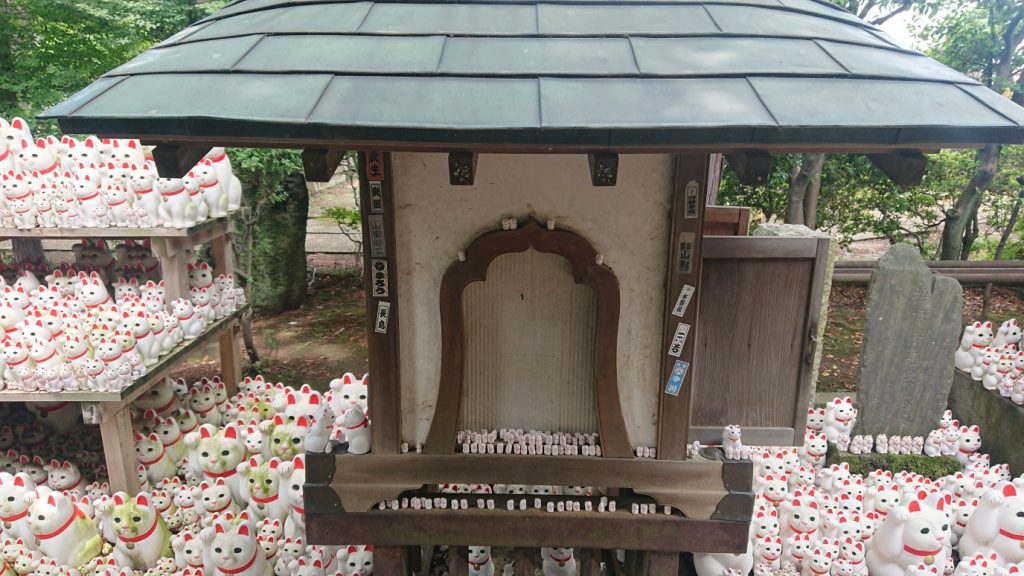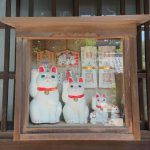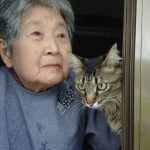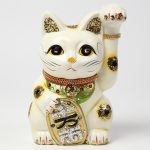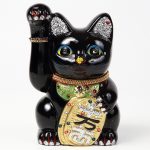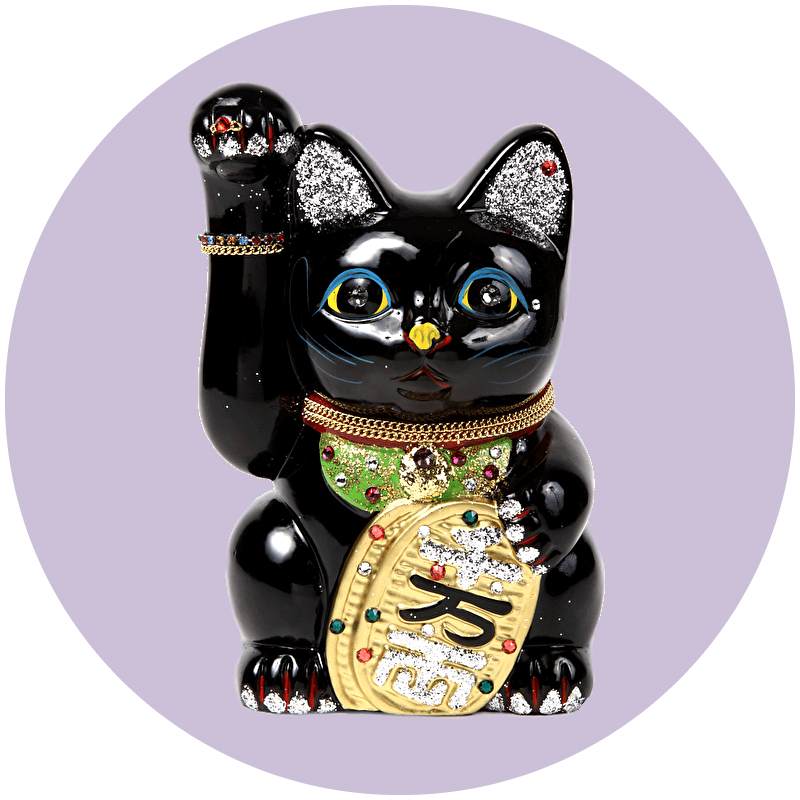
Origin of the Maneki-Neko
In the works known as “Yuyo Zaso” from the Tang Dynasty in China, it is written, “The cat washes its face, and when its hand goes past its ear, guests will arrive”.The source of the word “Manekineko” is said to have arisen based on this.What is the situation in Japan?There are various theories, so we shall introduce the main stories about its origin for you.In an age-based around rice, mice were the greatest enemy to those eating cultivated crops.
And the greatest enemy of mice are… that is right…”cats”.In the sericultureindustry, as well, when raising silkworms, they were said to have used catornaments to keep mice away.This was used to keep mice away by making itlook as though there was a cat around.As sericulture gradually weakened,they became a good luck charm among merchants for providing businessprosperity.It is said, therefore, that the source of the good luck charm “Manekineko” is a practical ornament for scaring away mice.
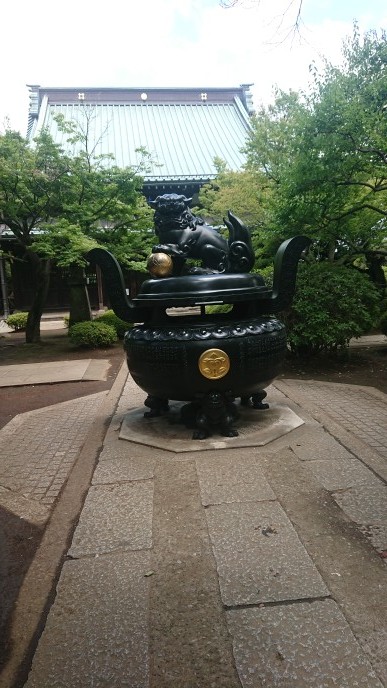
Asakusa Imado shrine(Theory of Imado-Yaki )
http://www.tokyo-jinjacho.or.jp/taito/3222/
A long time ago, in Asakusa Hanakawado, an old lady, and a cat lived together as friends. However, as a result of poverty, the woman had no food to eat day after day and had to let her beloved cat go.That night, the cat the old lady had kept appeared in the old lady’s dreams and told her “make a clay doll of my shape, make a “〆” mark on my back and please sell me. A good thing will happen to you.”When the old lady sold “Imado” clay dolls in the form of the cat at beside the Torii gate of Asakusa Shrine (Sanjasama), they immediately became popular as a lucky charm that brought the good fortune.This is said to have provided her with a living.Another theory based around “Imado” porcelain is that the cat of the old couple who made a twisted clay figure within Umezono, Sensoji Temple. This cat killed a small bird that was kept by an acquaintance.Feeling guilt, the cat threw oneself into a well.That night, the cat appeared in the old lady’s dreams, apologized for its crimes, and told her that “from now I will be a lucky charm, and let you torecover from various disease for you.”Hearing of this, a friend who worked for an “Imado” porcelain manufacturer made a cat doll for the old lady.When the old lady worshipped the cat doll, she recovered from her disease right away, and hearing of this, the cat became very popular and everyonewanted a doll in the form of this cat.
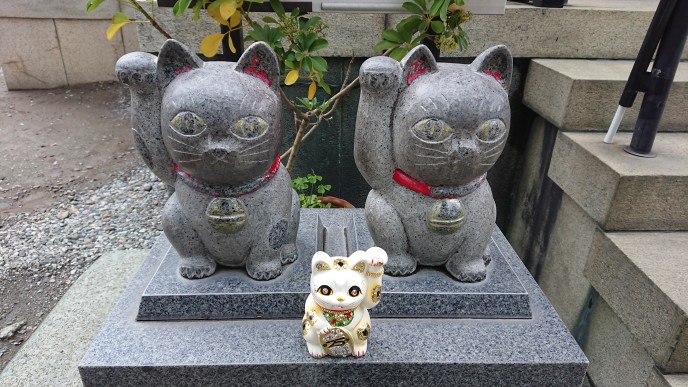
Jisyou Temple(Shinjyuku,Tokyo)
https://tesshow.jp/shinjuku/temple_wochiai_jishoin.html
In the Egota/Numabukurohara battle, facing defeat, the general was not sure which way to go, at which point a black cat appeared in front of Doukan Ohta, beckoning with his hand, and guided him to Jishoin, thus saving his life.This enabled Doukan to replenish strength and win the war. There is a theory that after this the Jizo-son of the cat was dedicated , and the “Manekineko” was born from cat Jizo-son worship. Another story is that in the middle period of the Edo age, the daughter of a wealthy merchant passed away.There is the theory that to pray for her soul, the cat she had loved was offered as Jizo(stone statue).
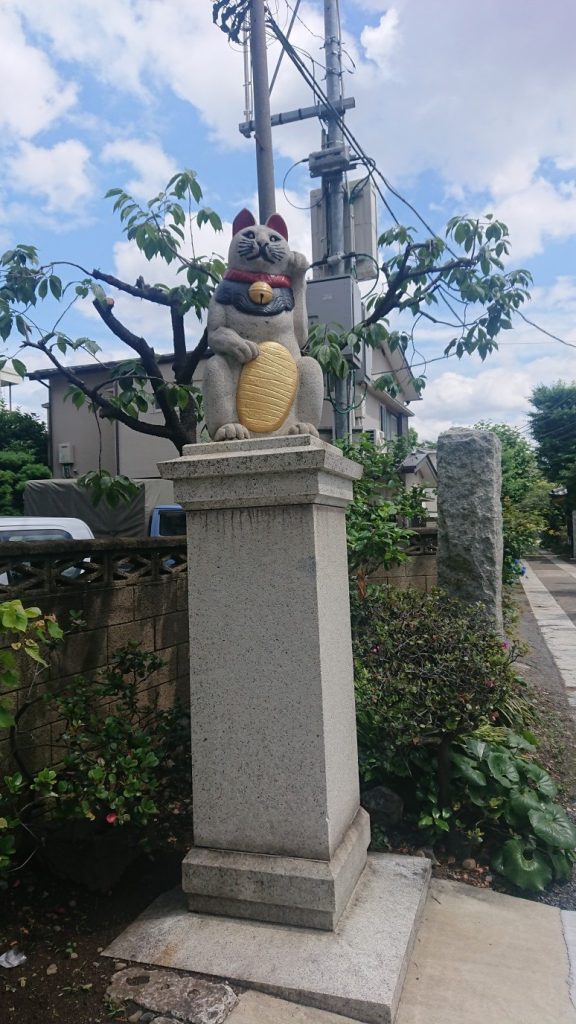
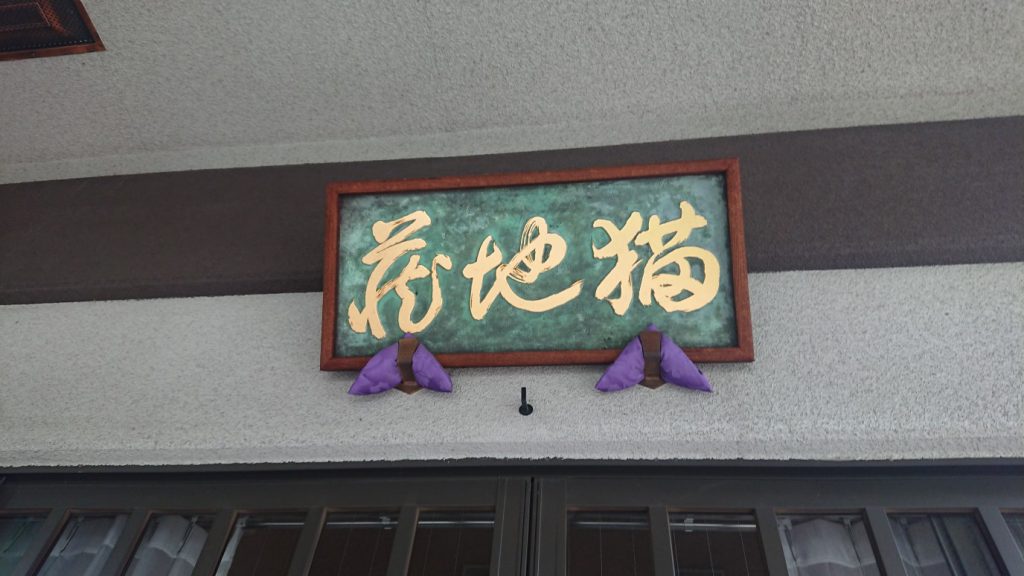
Dannohrin Temple(Kyoto)
http://dannoh.or.jp/cat/cat01.html
In a temple in Kyoto, they worship the “Shuya Jinson” that protects you from disasters, such as bandits and fire when night comes.The story passed down that the black cat is a messenger of this, and “Manekineko” with the “Shuya Jinson” engraved have been created since the middle of the Edo era , has been accepted by the people.n the book called the “Kyoto Folk History” published in the first part of the Showa era, messenger of god who is a cat for Shuya Jin of Danou who live in the Sanjo Ohashi Higashi Tsume allows a “Maneki-neko” to appear. A green “Manekineko” has its right paw up.For this reason, it is written that in the Edo age, it was forbidden to make “Manekineko cats with their left paw up”.


Saihou Temple(Toshima-Ku,Tokyo)
Usugumo, the poster girl of Miura-ya in the Yoshihara entertainment district, when trying to enter the lavatory, her beloved Calico cat that had followed her did not allow to enter.The master of the entertainment district wondered about this situation, he think that it was a devilish cat and cut off its head with a short sword(Wakisashi), at which point the head of the cat ate a huge serpent on the ceiling, thus saving Usugumo.Usugumo built a Nekozuka in the Sai-hoji Temple to provide for the loyal cat, and a wealthy patron merchant presented Usugumo with a cat built from aloe wood.There is a theory that items imitating this , sold in Asakusa, are the origins of the Manekineko”.

Gotoku Temple(Setagaya-Ku,Tokyo)
http://www.city.setagaya.lg.jp/kurashi/106/149/641/643/d00006127.html
A Buddhist priest in Gotokuji Temple shared his food with his favorite white cat, and every day told it “If you are grateful for my loving care, return the favor someday”.One day, in the Edo era, a 2nd generation Hikone daimyo Naotaka Ii, returning from a falconry expedition, passed by the front of the Gotokuji Temple, and as the cat beckoned him in front of the gates, decided to stop there for a rest.At this point, torrential rain suddenly began to fall, and Naotaka was able to avoid getting wet due to the rain.Naotaka was hugely grateful for this fact and later contributed a huge amount of money to the rebuilding of the depleted Gotokuji Temple, thus enabling it to return to prosperity.It is said that through this connection Gotokuji became the family temple of the Ii family.Another oral tradition passed down is that when Naotaka was sheltering under a single tree, a Calico cat beckoned him over, and thinking it strange, he approached the cat, at which point lightning hit the tree under which he had been sheltering.It is said that the Buddhist priests at that time, when this cat died, built a grave for this cat and buried it reverently.It was said that a “Manekineko-do” was built within the temple and a “Manegineko” with the cat in a pose where it has one paw up was created, and word spread that if you worship this, you will receive good fortune.
